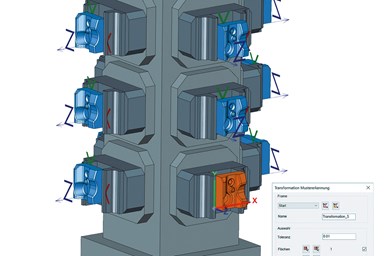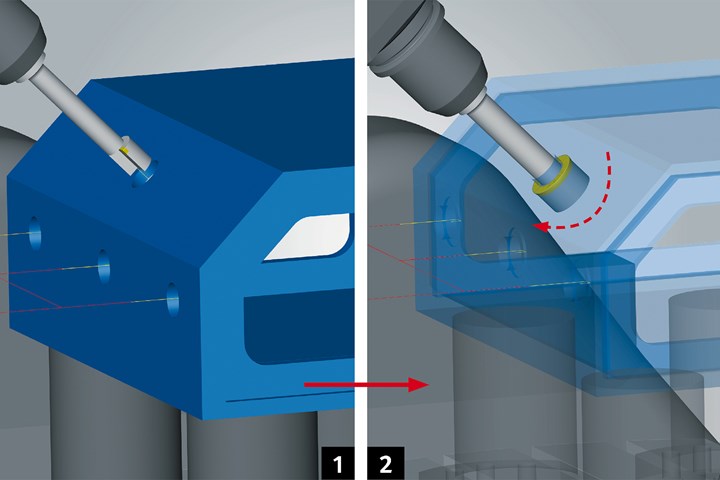CAD/CAM Software Suite Optimized for High Moldmaking Productivity
The Open Mind hyperMILL 2023 CAD/CAM software suite offers powerful, simplified NC programming in applications ranging from 2.5D machining to five-axis milling.
The new General Transformation Pattern feature in hyperMILL 2023 makes it easy to program recurring shapes with a single click. Photo Credit, all images: Open Mind Technologies USA
Open Mind Technologies introduces its latest hyperMILL 2023 CAD/CAM software suite, which offers users new and enhanced features for powerful and simplified NC programming in applications ranging from 2.5D machining to five-axis milling.
For easy programming of recurring shapes with a single click, hyperMILL 2023 has a new General Transformation Pattern feature. It uses a selected reference geometry and searches for the same reference in all other models regardless of its spatial orientation, creating a general transformation pattern including associated frames. This is useful when there are multiple components.
To ensure the highest level of safety while providing reliable programming when back boring, a new 2.5D back-boring machining strategy enables back boring tasks to be programmed on machines with different kinematics conveniently and easily. Toolholders and inserts, as well as monobloc tools, are displayed one-to-one in the virtual machine and checked for collisions. Now programming the controller for countersinking, deburring and milling tools on the once inaccessible back side of a hole can be done with ease.
An enhanced milling surface extension is offered for 3D Z-Level Shape Finishing and 3D Profile Finishing strategies, which Open Mind says ensure high-quality and reliable surface extensions, even with complex geometries. Users can reliably and easily protect sharp edges and divide up machining areas, which is useful for creating high-quality surfaces in tool and moldmaking when combined with a Smooth Overlap feature.
2.5D Back Boring strategy in hyperMILL 2023 reliably avoids collisions when inserting and retracting tools on the back side of a hole.
Additional updates involve more flexible, simplified programming of free-form tools, groove plunging with free tool geometry; new mill-turn capabilities, now “Smooth Overlap,” available for optimizing finishing paths in turning; and the NC Optimizer feature in the hyperMILL Virtual Machining strategy, which now optimizes fixed rotary and parallel axes by automatically locating a kinematically correct and collision-free solution.
Related Content
-
What is Scientific Maintenance? Part 2
Part two of this three-part series explains specific data that toolrooms must collect, analyze and use to truly advance to a scientific maintenance culture where you can measure real data and drive decisions.
-
How to Select a Mold Temperature Controller
White paper shares how cooling channel analysis, which collects maximum pressure drop, total flow rate and heat dissipation, eases the performance evaluation of mold temperature controllers.
-
Tolerancing in Mold Design, Part 1: Understanding the Issues of Conventional Bilateral Tolerancing
Mold designers must understand the location, orientation and form limitations of conventional tolerancing before changing to another dimensioning system.

















